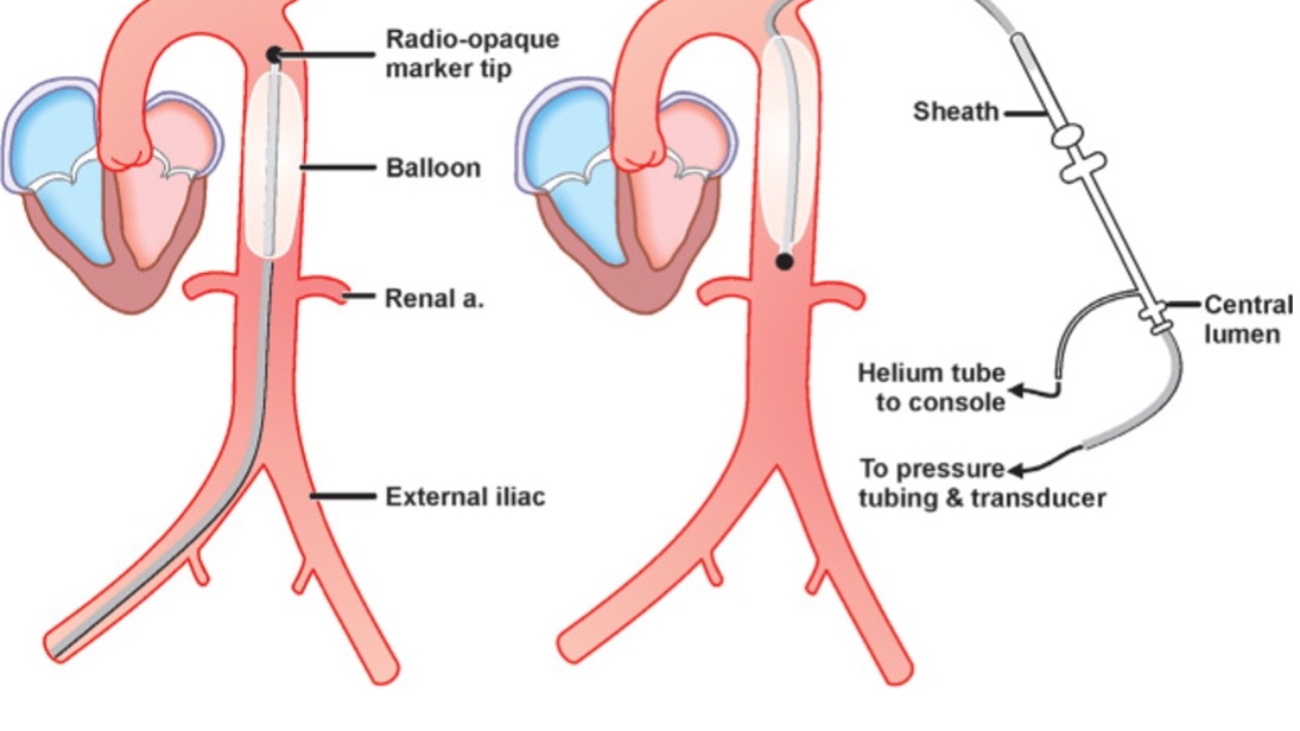IABP (Intra-aortic Balloon Pump) is a mechanical device used for temporary circulatory support in individuals with certain cardiac conditions. It consists of a long, thin tube called a catheter with an inflatable balloon at its tip.
Here’s how the IABP works:
- Placement: The IABP is inserted through the femoral artery, typically in the groin area. The catheter is carefully threaded until it reaches the aorta, the large blood vessel that carries oxygenated blood from the heart to the rest of the body.
- Balloon Inflation and Deflation: Once the IABP is positioned in the aorta, the balloon inflates and deflates in sync with the heartbeat. The timing of inflation and deflation is controlled by a console connected to the IABP.
Inflation Phase: During the inflation phase, the balloon inflates, temporarily blocking the blood flow in the aorta. This increases pressure in the aorta, which helps improve coronary artery blood flow and reduces the heart’s workload.
Deflation Phase: After a brief inflation, the balloon rapidly deflates just before the heart pumps, allowing blood to flow easily from the heart into the aorta and the rest of the body.
The inflation and deflation occur synchronously with the heartbeat, providing mechanical assistance to the heart’s pumping action. This process helps to increase coronary blood flow, reduce the heart’s workload, and improve overall cardiac output.
Clinical Scenarios Where IABP is Used:
- Acute Myocardial Infarction (heart attack) with cardiogenic shock: The IABP stabilizes the patient’s hemodynamics and improves coronary artery blood flow while awaiting further treatments.
- Decompensated heart failure: For patients with severe heart failure, the IABP provides temporary support until heart transplantation or ventricular assist device implantation is possible.
- High-risk cardiac surgeries: The IABP supports the heart during complex cardiac surgeries, ensuring stable blood flow throughout the procedure.
Duration and Monitoring:
The IABP is typically used for a short period, ranging from days to weeks, depending on the patient’s condition. Continuous monitoring and regular assessment of the patient’s clinical status, hemodynamics, and potential complications are essential.
Conclusion:
The IABP is a valuable temporary support device that assists patients with heart failure, acute myocardial infarction, or during high-risk cardiac surgeries. While it provides immediate hemodynamic support and relief, it is not a definitive treatment but a bridge to further interventions, such as heart transplantation or the use of ventricular assist devices.
For patients with severe cardiac conditions, IABP therapy can be life-saving by enhancing coronary blood flow and reducing the heart’s workload. However, its use should always be closely monitored and managed by a specialized healthcare team.

